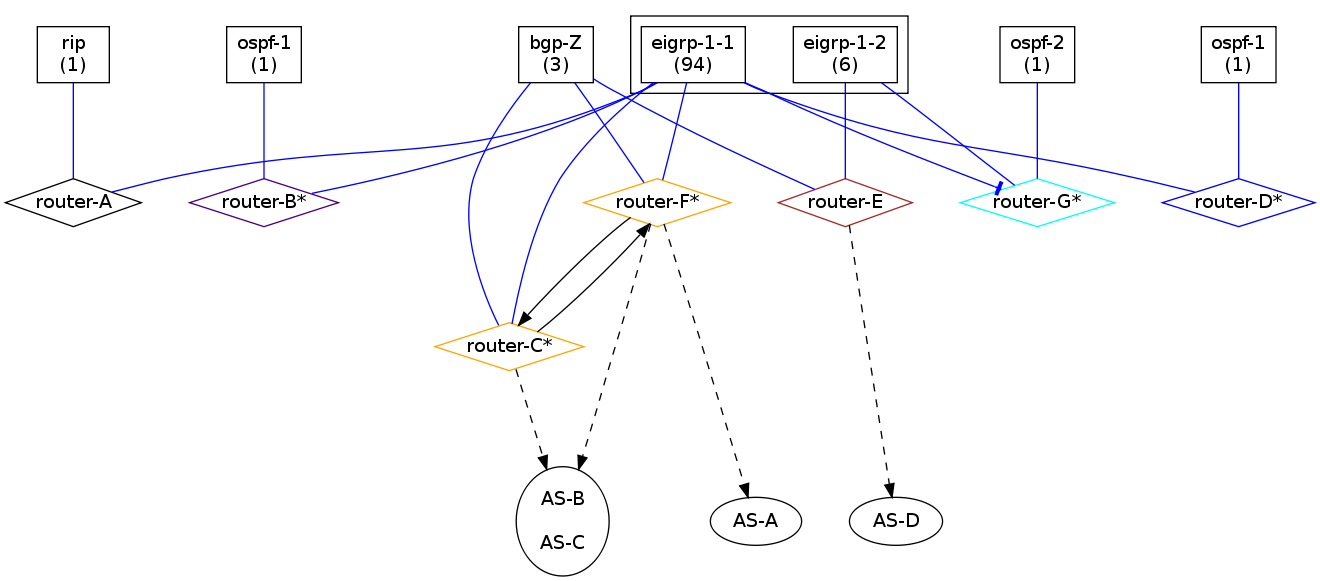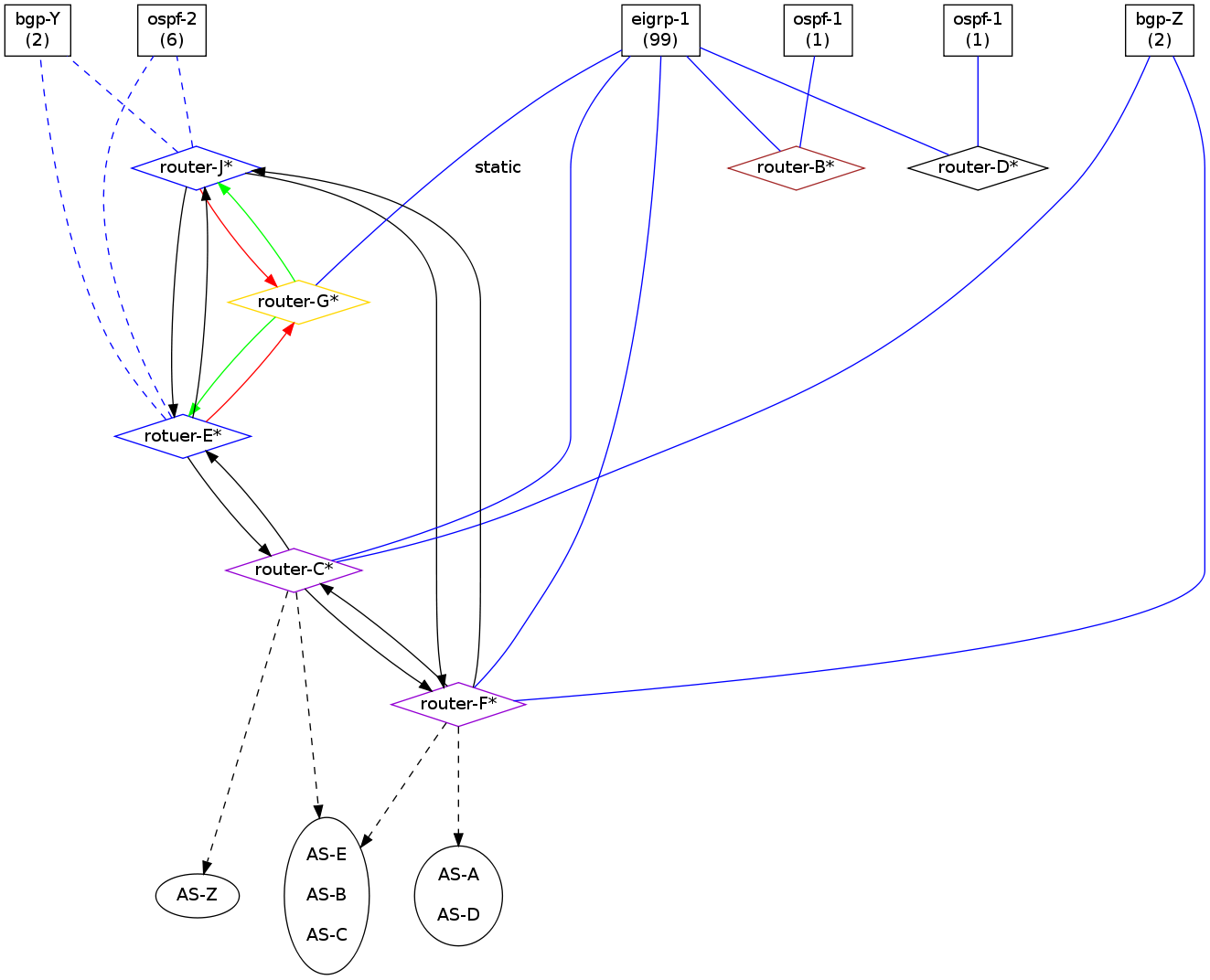Campus network 1

Campus network 2

Campus network 3

How to read the grahp?
1. Information revealed by the graph
A. Nodes of the graphs include:
i. routing instances and subinstances;
ii. border routers between routing instances of different protocols where they share routes with one another;
iii. internal routers whose some interfaces participate in a routing protocol with route filters;
iv. routers that route packets along configured paths, i.e. routers that have static routes;
v. peering external AS-es and border routers to which external AS-es are connected.
B. Edges of the graphs include:
i. route redistribution, i.e. routing processes of different routing instances exchange routes;
ii. route filtering within the same protocol, i.e. routing processes of different routing subinstances exchange routing information through paths of route filters;
iii. eBGP peering, i.e. gateway routers run eBGP peering session with external AS-es;
iv. iBGP peering, i.e. internal routers run iBGP sessions form peering relationship;
v. hard-coded routes, i.e. static routes and default routes.
2. A brief legend

3. Detailed explanation about symbols
A. Node texts
| text | format | example | explanation |
| routing instance name | protocol-ID | OSPF-1 | ID is the routing process ID. |
| routing subinstance name | protocol-ID-subID | EIGRP-1-1 | SubID is the ID of the subinstance within the instance. |
| AS label | AS-number | AS-Z | Number is the AS number. |
B. Edges
i. A green (red) arrow from a router A to another router B represents that a static (default) route is configured on A, which uses B as the next-hop.
ii. An edge between a router and a routing instance (or subinstance) represents that the router participates in that routing instance(or subinstance). It may be solid with no label, which means that the router redistributes routes from all other routing instances on that router into that routing instance. It may be solid with label, which means that the router redistributes routes from the labeled routing instances on that router into that routing instance. It may also be dashed, which means no route is redistributed.
iii. Black arrows between two routers represent the iBGP peering sessions established between them. A black arrow from a router to an AS denotes an eBGP peering session established between the router and the external AS.
iv. At the router end of such an edge, a short line across it represents that a route filter is configured on the router, which regulates the routes exchanged between the router and the rest of the routing instance (or subinstance)
C. Node aggregating
Since the most important role peering AS-es play is providing connection to Internet for the network, operators of the network would only be interested in what gateway routers an AS is connected to. So we consider AS-es are functionally equivalent if they connect to the same border routers. We cluster the functionally equivalent AS-es together as one node to minimize the number of AS nodes.
Routers are considered functionally equivalent if they play
the same role, such as redistributing routes for the same routing instance or subinstance, or constituting alternative filtering paths for routing subinstances of the same instance. Functionally equivalent routers are given the same color.
D. Static routes
A star suffixing a router name represents static routes or default routes are configured on the router.
4. Interpreting the examplary graphs:
Please refer to Sec V. of the paper for interpretation of the examplary graphs.
|




